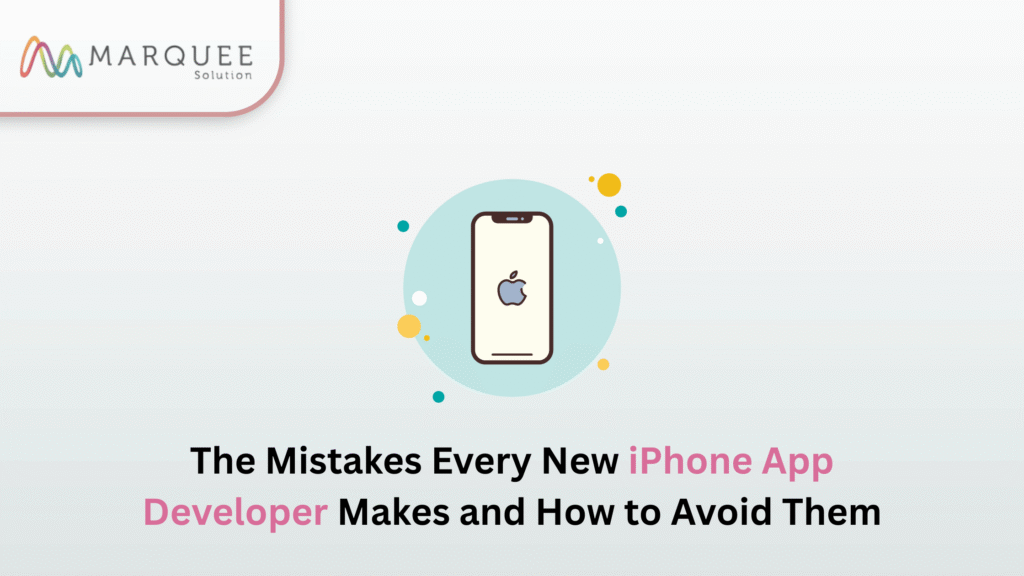Building a mobile application is a multifaceted journey that stretches far beyond coding. From choosing the right technology to assembling the ideal development team, every decision directly influences your app’s performance, user experience, and business outcomes. A single mistake, no matter how minormcan create a ripple effect with serious consequences.
A recent example illustrates this perfectly. More than 5,000 flights were canceled worldwide, Windows systems entered the dreaded blue screen mode, payment systems crashed, Times Square billboards went dark, medical professionals couldn’t access patient records, and even the Mercedes F1 team experienced malfunctioning systems. The cause? A tiny logic error during a routine sensor configuration update for CrowdStrike’s Falcon platform.
What appeared insignificant led to global disruption. Elon Musk even labeled it the “Biggest IT fail ever.”
As a result, CrowdStrike faced:
- A drop of over 20% in share value, approximately $16 billion in market loss
- Damaged reputation due to negative reviews
- Customer churn and reduced trust
- Potential legal complications
- Higher costs for crisis management
Developers worldwide agreed on one thing: comprehensive testing across devices, operating systems, and environments could have prevented the entire disaster.
Now imagine a similar mistake happening on mobile on millions of devices used daily. The impact would be even more catastrophic, considering how omnipresent smartphones are.
This incident underscores the importance of understanding and avoiding common mobile app development mistakes. Below are the top 15 mistakes developers make and how to avoid them.
Top 15 Mobile App Development Mistakes and How to Avoid Them
1. Skipping the Minimum Viable Product (MVP)
Developing a full-scale app without first validating your idea is a risky and costly move. Without an MVP, you miss early feedback, delay market entry, and risk building a product that users may not actually want.
How to avoid this mistake:
- Prioritize essential features
- Release the MVP to a select audience
- Assess traction and user demand
- Improve iteratively using real user insights
- Expand only after validating core assumptions
2. Choosing the Wrong Technology Stack
Your tech stack dictates your app’s future scalability, performance, and maintainability. Selecting an unsuitable stack can lead to slow performance, difficulty in scaling, and feature limitations.
How to choose correctly:
- Define functional and non-functional requirements
- Compare different tech stacks
- Consult experienced engineers
- Ensure scalability
- Test performance and platform compatibility
3. Hiring the Wrong Development Team
Whether you’re partnering with an iPhone app development company or building an in-house team, choosing the wrong people leads to delays, misalignment, communication breakdowns, and subpar results.
How to select the right team:
- Review portfolios and past work
- Ensure expertise in the required technologies
- Understand their development methodology
- Request clear cost and timeline breakdowns
- Confirm communication practices
- Secure solid legal agreements
4. Ignoring Performance Optimization
Slow load times, battery drain, and unresponsive interfaces frustrate users, leading to instant uninstallations.
How to optimize performance:
- Test across different networks and devices
- Write efficient code and compress assets
- Use caching and smart data handling
- Implement asynchronous operations
- Continuously monitor performance
5. Neglecting Cross-Platform Compatibility
Focusing only on one platform heavily limits your user base. Even with native apps delivering a superior experience, cross-platform frameworks provide excellent reach.
How to ensure compatibility:
- Plan for multi-platform development early
- Use modern frameworks like React Native or one backed by a strong Flutter App Development Company
- Test extensively across devices
- Maintain consistent UI/UX
- Leverage platform-specific features wisely
6. Overloading the App with Features
More features do not mean a better app. Feature-heavy apps become slow, confusing, and difficult to maintain.
How to avoid overcomplication:
- Start with an MVP
- Identify essential features through user research
- Add features gradually
- Keep the UI clean and intuitive
- Use feedback to remove unnecessary features
7. Writing Poorly Structured Code
Unoptimized, undocumented, or unmaintainable code results in slow performance, longer development cycles, and expensive maintenance.
How to ensure clean code:
- Follow best practices and style guides
- Conduct regular code reviews
- Refactor continuously
- Use automated testing tools
8. Faulty Third-Party API Integration
APIs power modern app features from maps to payments. Poor integration creates vulnerabilities and reliability issues.
Best practices:
- Choose trusted API providers
- Prioritize security and encryption
- Test API behavior extensively
- Implement fallback systems
- Monitor updates and performance
9. Failing to Plan for Scalability
Unexpected growth can crash unprepared systems. Apps must handle increasing users, data, and features without breaking.
Scalability strategies:
- Adopt scalable architecture
- Perform load testing
- Consider microservices
- Optimize databases
- Use monitoring tools
10. Overlooking Security Measures
Weak security can lead to data breaches, operational failures, and costly lawsuits.
Security best practices:
- Implement encryption
- Use MFA and strong password policies
- Conduct regular audits
- Follow industry standards
- Train your team in secure development
- Comply with relevant regulations
11. Lack of Comprehensive Testing
Skipping or rushing testing leads to bugs, crashes, and poor user experience.
Effective testing approach:
- Conduct functional, usability, performance, and security testing
- Use automated tools
- Test on multiple OS versions and devices
- Release beta versions for feedback
12. Ignoring User Feedback
Ignoring the voice of your users prevents you from creating an app that truly meets their needs.
How to integrate feedback:
- Provide simple feedback channels
- Conduct usability tests
- Use analytics to understand user behavior
- Address high-priority issues promptly
13. Neglecting App Store Optimization (ASO)
Without ASO, even great apps struggle to gain visibility.
ASO essentials:
- Use relevant keywords
- Write compelling titles and descriptions
- Add engaging icons and screenshots
- Update the listing regularly
14. Launching Without a Strategy
Launching without planning results in missed opportunities and poor first impressions.
Successful launch planning:
- Map out pre- and post-launch activities
- Develop a strong marketing strategy
- Prepare customer support
- Set clear goals and timelines
15. Underestimating Total Development Cost
App development involves features, platforms, maintenance, marketing, updates, and more. Miscalculating costs can derail the project.
How to budget accurately:
- Allocate funds for unexpected expenses
- Break the project into phases
- Include all development lifecycle costs
- Work with experienced developers
- Monitor and adjust spending regularly
Build Future-Ready Mobile Apps With MindInventory
At MindInventory, we transform ideas into sophisticated mobile solutions. Whether you need concept validation, UI/UX design, development, or post-launch support, our team is equipped with cutting-edge skills and modern tools. We build applications across Android, iOS, cross-platform, and advanced technologies like AI/ML, AR/VR, and cloud solutions.



